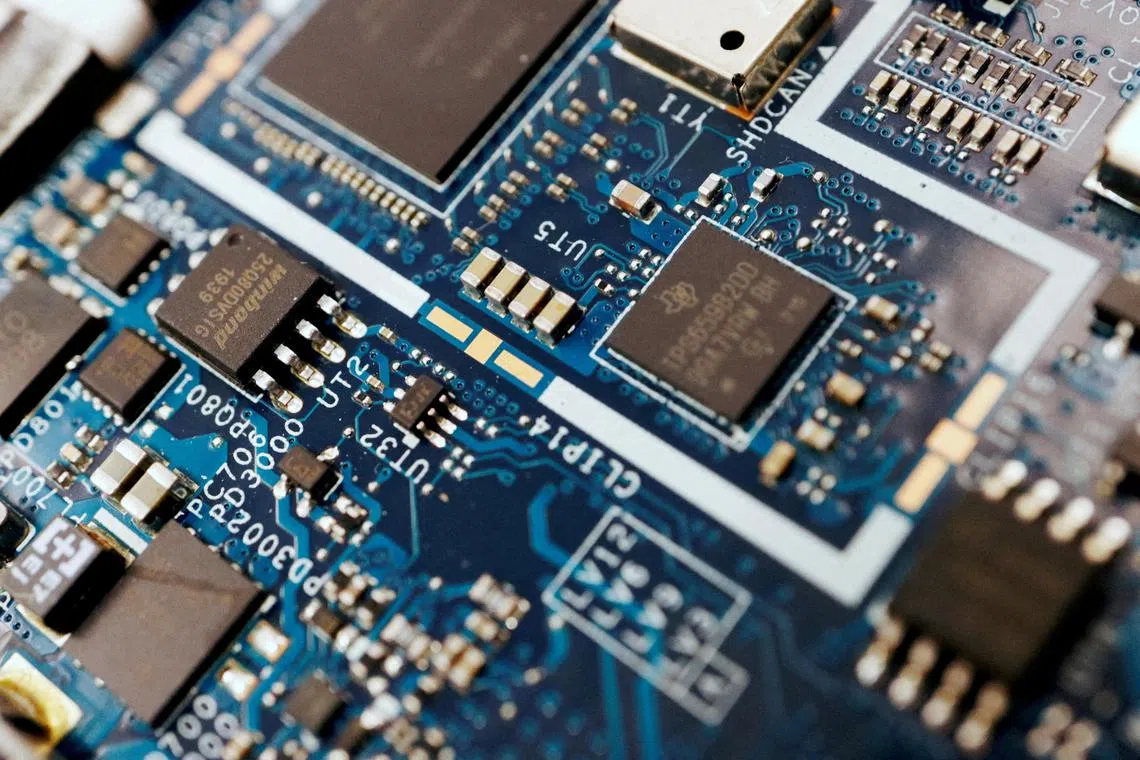China’s chip sector needs more than state money to dull impact of US restrictions
Sign up now: Get ST's newsletters delivered to your inbox

China plans to splurge to help its chip sector overcome US export curbs, but money can only do so much.
PHOTO: REUTERS
Follow topic:
SHANGHAI – China plans to splurge to help its chip sector overcome US export curbs, but money can do only so much unless Chinese firms can break from a cycle that hinders innovation and traps them at the low end of the value chain, industry players said.
The government has earmarked US$140 billion (S$188 billion) that could include subsidising the purchase of domestically produced chipmaking equipment, Reuters reported in December, likely benefiting manufacturers like China’s sole semiconductor lithography specialist, Shanghai Micro Electronics Equipment Group (Smee).
The outlay was in response to the United States increasingly tightening curbs on the export of chipmaking technology
But money alone is not enough to catch Western rivals that are generations ahead.
Smee and local peers mainly sell to domestic chip foundries and the lack of exposure to advanced chipmaking facilities like those of Taiwan Semiconductor Manufacturing Company and South Korea’s Samsung Electronics has made it difficult for them to independently solve engineering problems and move up the value chain, industry workers and market watchers said.
“This prevents whatever advances they make in research and development (R&D) from getting into mass production and also limits them from learning more tricks of the trade,” said Mr Mark Li, who tracks China’s chip sector at Bernstein Research.
Just as in the aviation industry, chipmaking equipment manufacturers work closely with clients, offering long-term services including installation, calibration, maintenance and repair of machines that can cost more than US$100 million each.
This collaboration can result in a substantial sharing of know-how that helps both sides advance technologically.
People who worked at Smee and other Chinese companies in areas such as chip etching said barriers to entry did not seem too high until supply chains became even more global and the engineering more complicated, and the market was cornered by firms such as Dutch lithography giant ASML Holding.
Top management at Smee had no lithography experience and staff built their first machines by buying and studying second-hand equipment and by reading public patents and papers, one former Smee engineer said.
The company advanced enough to produce a machine that could print circuit patterns as tiny as 90 nanometres on silicon wafers – two decades behind ASML.
It was hailed as a domestic breakthrough nonetheless and won a local government award in 2018.
Smee has not made any major advancements since, in part due to difficulties in procuring equipment from abroad, said the former Smee engineer.
“Even if we could have built the machines, we would not have known how to service and maintain them,” he added.
Another former top employee at a Chinese chipmaking equipment manufacturer recounted how, while working to master the etching procedure for 3D Nand Flash, the company could not perfect a critical element, namely the channel hole or hole size.
“We knew what it takes to do that but we were limited by the equipment’s design capability. Our US rival had already solved that,” the employee said.
Some people in the industry have urged a complete rethink in the way China can catch up by focusing on what the next era of chipmaking could look like, rather than compete with overseas peers in trying to make circuits on chips denser and denser.
Late in February, two senior academics from the Chinese Academy of Science published an article advocating the refocus of efforts on R&D for new technology and materials, rather than on emulating existing tech from overseas.
By amassing patents and managing their use overseas, the authors wrote, “we can set our own choke points and barriers in the global chip supply chain, create countermeasures and hopefully resolve the current technological pain points”.
In the meantime, Chinese chip firms have become even more isolated since the US imposed restrictions in October that barred US companies such as Lam Research Corp and Applied Materials from supplying equipment that can produce relatively advanced chips without a licence.
The situation could be worsened for Chinese companies should Japan and the Netherlands agree with the US to restrict exports of chipmaking equipment to China. REUTERS

